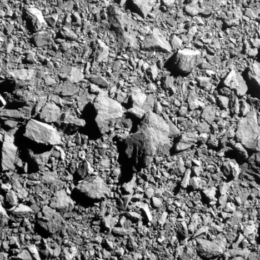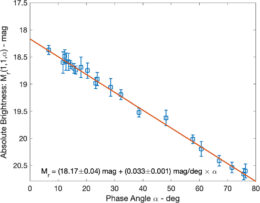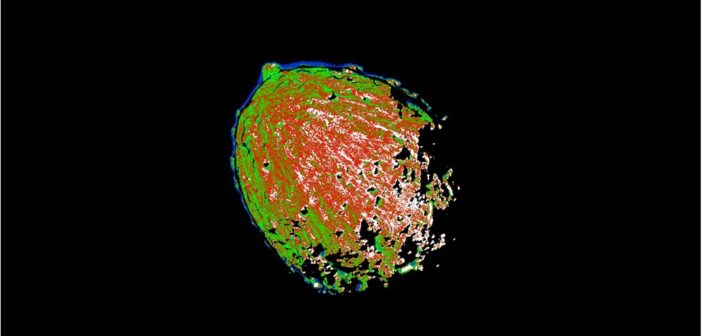The Double Asteroid Redirection Test (DART) mission marked humanity’s first attempt to alter the course of an asteroid, a technique that could one day avert a catastrophic impact and save countless lives. But to fully understand the outcome of the experiment and to determine the impact of the human-caused impact, astronomers need a detailed characterization of their target. A recent study aims to bridge observations taken by DART moments before its demise and those taken from back on Earth in order to measure surface properties that neither dataset could constrain alone.
Intentional Collision and In-Situ Measurements
In September 2022, NASA’s DART spacecraft approached a near-Earth asteroid named Didymos and its moon, Dimorphos. With cameras trained on Dimorphos specifically, DART took pictures with ever-increasing resolution as the distance to the moon’s surface steadily shrank. Unfortunately for both DART and Dimorphos, though, this was not a flyby mission. Instead of changing course, DART plowed straight into the moon with enough momentum to dig a fresh crater and to change the satellite’s orbital period by more than 30 minutes.

The surface of Dimorphos, as seen by the DART spacecraft 2 seconds before impact. [NASA/Johns Hopkins APL]
Some of these properties are best measured from up close to the asteroid, and the images beamed back by DART moments before its abrupt end contain much useful information. Others, though, such as how the surface scatters light, are better constrained by observing the asteroid from many different angles, which one can do by taking observations from Earth over many months. By combining these different types of measurements, a fuller picture emerges than could be built by either dataset alone.
Adding in Ground-Based Observations

The solar phase curve of Dimorphos as measured from Table Mountain Observatory. [Buratti et al. 2024]
This synthesis demonstrates that although the missions we send up to gather exquisite in-situ data, sometimes important, fundamental properties require patient observations from back home as well. In 2026, the European Space Agency’s Hera spacecraft will arrive at Didymos to survey the damage, and analysis of its data will rely heavily on context learned through studies like these in the intervening years.
Citation
“Pre-impact Albedo Map and Photometric Properties of the (65803) Didymos Asteroid Binary System from DART and Ground-Based Data,” B. J. Buratti et al 2024 Planet. Sci. J. 5 83. doi:10.3847/PSJ/ad2b60
